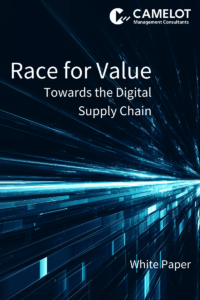In a small series of articles, we started to outline the key characteristics of optimization-based and heuristic-based approaches for the emerging field of automated supply chain planning. In part I of this series (How to plan your supply chain Part I), we gave a brief introduction into the main principles of optimization-based and heuristic-based supply chain planning. This article will be the starting point for an extensive discussion of the decision-making factors like user-friendliness or comprehensibility to choose one of the methods for automated planning.
Thinking of the user-friendliness associated with a supply chain planning approach, first of all the complexity of setting up the solution method comes into one’s mind. A certain complexity is inherent to both camps – either you need to formulate mathematical equations to model the problem or you need to define a suitable set of planning rules. In this context, the optimization approach usually requires external specialists experienced in mathematical modeling. For the heuristic solution design, in contrast, internal planning experts will deliver the most valuable input from proven planning procedures – facilitated by an implementation project team.
What affects planners’ convenience and challenges?
Having completed the project-based initial solution design, the continuous adaptions to cover varying planning situations will be significantly supported by key users, which closely links the question of solution design complexity to solution maintainability in daily operations. Whilst the results of a heuristic-driven planning approach allow for direct control via business rules (master data settings), the relation between optimization results and objective function weightings or other elements of a given mathematical formulation is not intuitive to planners. Over time experienced users get a detailed understanding of how to parameterize heuristics to achieve the expected results within ever-changing environments. Using an optimization approach instead, users tend to get frustrated and rather just leave things as they are – configuration options are not updated due to a sheer lack of understanding the influencing factors on the optimization results. Additionally, a suitable parameterization of a heuristic can be much easier automated with the help of modern AI technology, adapting to changing business scenarios. These arguments indicate that maintainability as part of ensuring sustainability in daily business is clearly much easier with a heuristic in place.
Possibility to interact with the solution strategy
A general factor impacting the users’ acceptance of a planning approach relates to the possibility to interact with the solution strategy. This is obviously one of the main differences between the black-box-generic-mathematical-solver approach and business rule-driven heuristics. On the one hand, a mathematical engine solves a model to optimality – apart from interim solutions, the algorithmic procedures will stay hidden from the user. The parameterization of mathematical optimization algorithms is a specialist field not to be covered by planning-oriented users. On the other hand, there is a clear transparency and traceability regarding the solution process of a heuristic approach. Using advanced logging technologies, any user can post-planning evaluate a what-if scenario for other parameters. How would the system have planned a specific order if I had set parameters differently? This sets the right level of confidence to adjust situations and interact with the heuristic based on the conceptual understanding. From the experience of multiple system implementations, the user of one or the other method usually tends to put more acceptance in the comprehensible approach. So, do you rather prefer a transparent solution finding process over a one-click black-box solution determination?
In Part III of our series, we will outline and discuss further criteria to be considered when being confronted with the decision on heuristic-based or optimization-based production planning. The first outcome of this series becomes already obvious: the final decision needs to respect multiple dimensions – but should never ignore the human factor when it comes to maintainability and usability as key criteria for the acceptance of the approach.
Part I: How to plan your supply chain
Part III: How to plan your supply chain
We thank Jens Rieder for his valuable contribution to this article.

